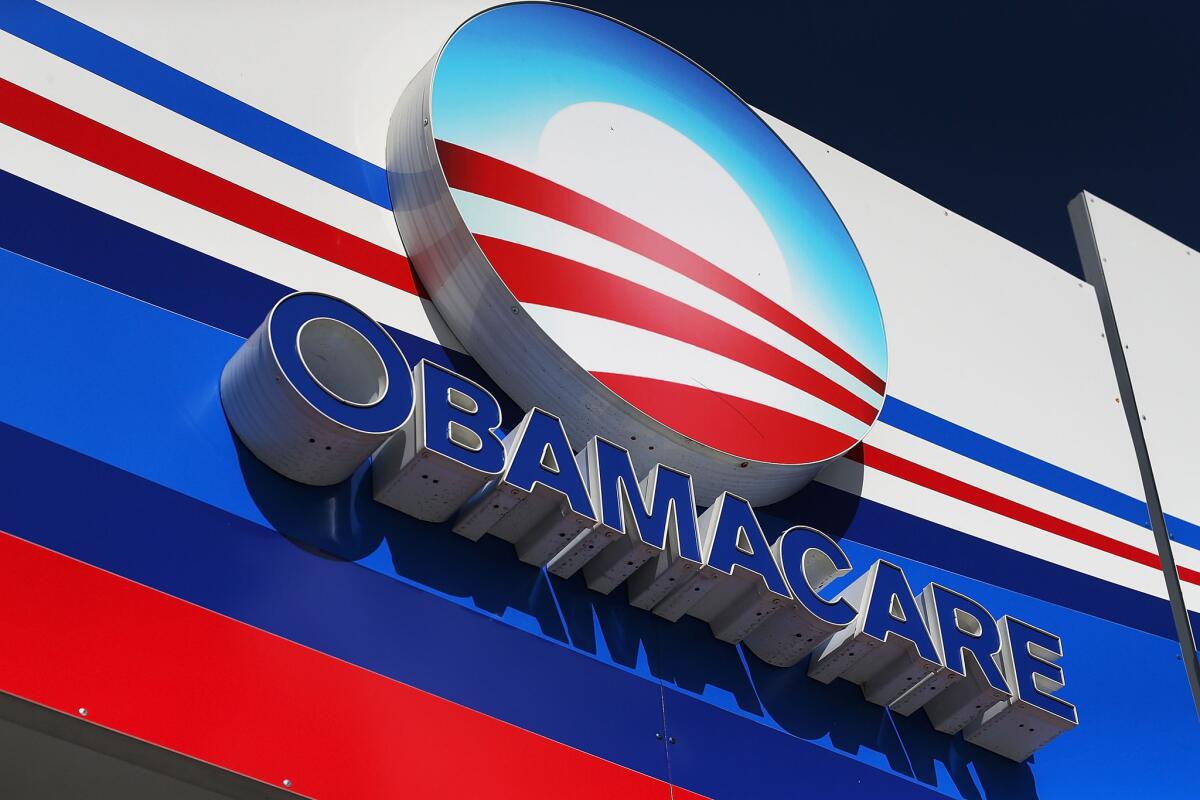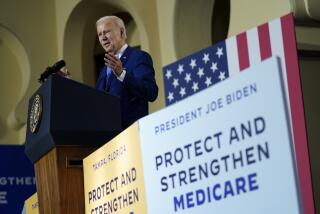Editorial: Despite a host of political and practical challenges, Obamacare keeps chugging along

An Obamacare sign is seen outside of an insurance company office on Dec. 15 in Miami, Fla.
- Share via
The House of Representatives is expected to give final approval Wednesday to a bill that would repeal much of the 2010 Affordable Care Act — a measure that President Obama will surely veto, and that Republicans will not be able to override. A more serious threat to the program has been rising premiums and insurance-company losses in the state marketplaces for Obamacare policies, two factors that some analysts feared would trigger a death spiral of mounting premiums and declining enrollment. The results so far, however, suggest that Obamacare is surmounting these challenges as well.
These incidents don’t tell of a program crumbling under its own weight.
2015 was a tough year for Obama’s signature domestic program. A dozen nonprofit insurance co-ops created by the law have failed, unable to survive despite hefty government aid. Meanwhile, many insurers sought double-digit increases in premiums for 2016 to compensate for higher-than-expected healthcare claims. UnitedHealthcare, a large national insurer, went further, shutting down its marketing of Obamacare plans and suggesting that it wouldn’t sell them at all in 2017.
But these incidents don’t tell of a program crumbling under its own weight — they’re signs of an industry adapting to the enormous changes wrought by the law. Eager to grab a large chunk of the new Obamacare market, some insurers priced their policies too low in the first years of the exchanges, when they had little experience to guide them. Their adjustments this year pushed up premiums for the benchmark plan — the one on which subsidies are based — by 11% on average across the exchanges.
According to the Kaiser Family Foundation, the increase was significantly lower in large cities across the country, where there was more competition among insurers and larger pools of customers. Many consumers also were able to save money by switching insurers. Besides, about 80% of Obamacare enrollees receive subsidies that limit premiums to a percentage of their income, blunting the effect of any rate hikes.
With about a month left in the open enrollment period, the 37 federally operated state exchanges are on track to meet or exceed the (admittedly conservative) projections for sign-ups, with larger numbers of new customers and young enrollees than at the same point last year. And as more states open their Medicaid programs to a larger share of their poor residents, the number of uninsured Americans continues to shrink. The rising cost of healthcare remains a problem, and the Affordable Care Act’s efforts on that front haven’t yielded dramatic improvements. Nevertheless, covering more people with insurance is crucial to making the systemic changes needed to bring healthcare costs under control. And on that front, at least, the law is still working.
Follow the Opinion section on Twitter @latimesopinion and Facebook
More to Read
A cure for the common opinion
Get thought-provoking perspectives with our weekly newsletter.
You may occasionally receive promotional content from the Los Angeles Times.






